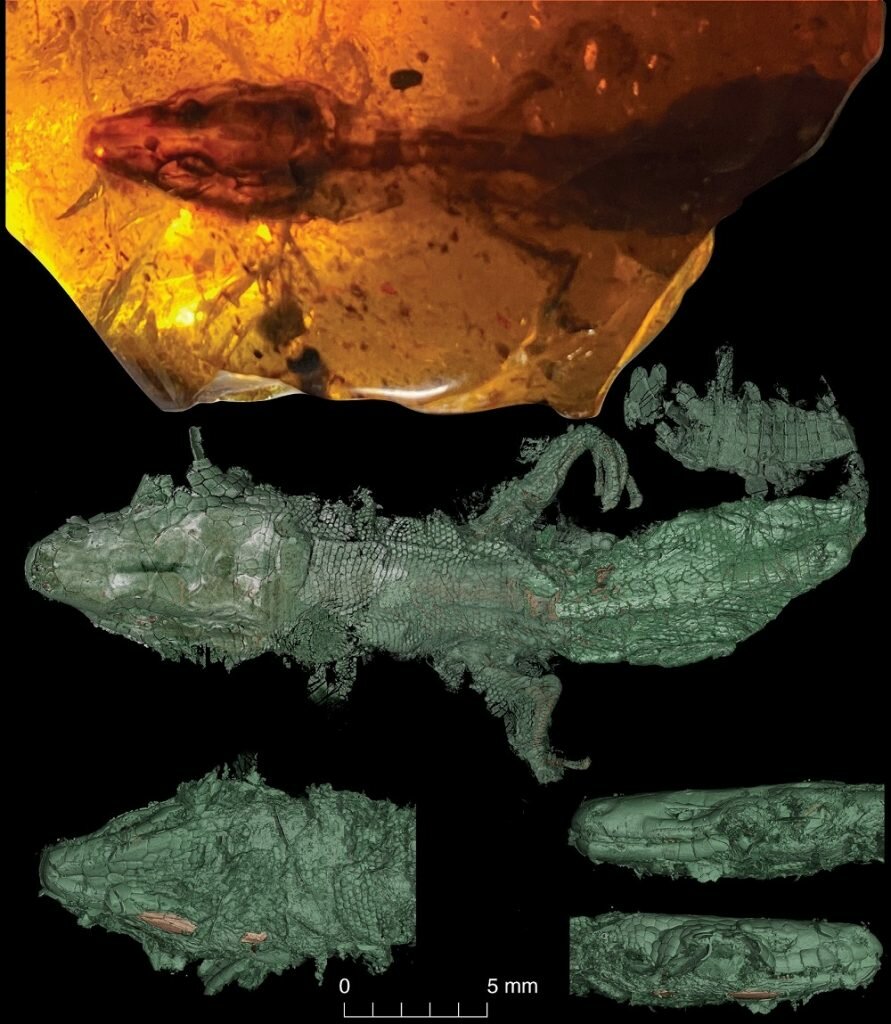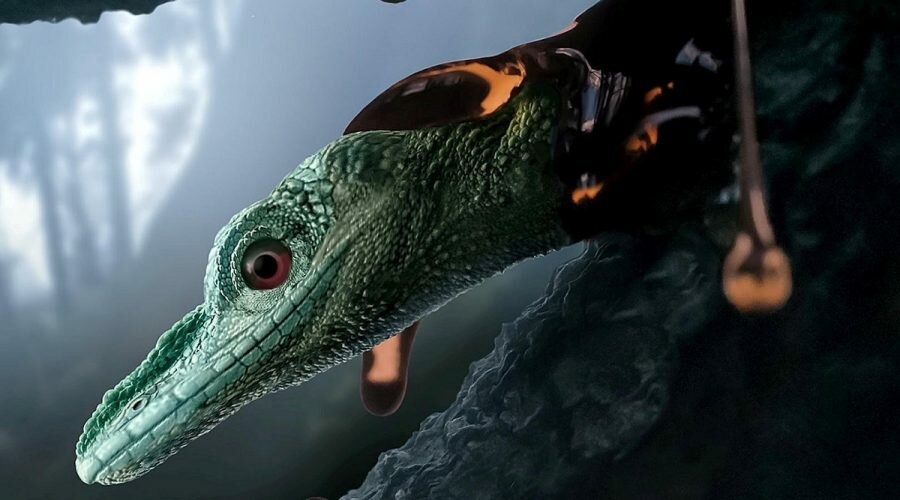Juan Diego Daza, associate professor in Sam Houston State University’s Department of Biological Sciences, is co-author of a new study that involves the discovery a new species of fossil lizard.
Published recently in Scientific Reports, the collaborative research describes the first definite representative of a group of lizards known as scincoideans, a group that today includes skinks, Armored Lizards, and Night Lizards, or xantusiids. Intriguingly, the fossil most closely resembles xantusiids, which are today found only the American southwest, Central America and Cuba, half a world away from Myanmar.
According to Daza, this new fossil lizard resembles xantusiids in some morphological features, notably the arrangement of its scales which, along with parts of the skeleton, have been preserved in the amber. Even the delicate eyelids are visible, revealing a difference from modern Night Lizards, in which the eyelids are fused into a transparent scale, as in snakes.
“We had the rare opportunity of studying the articulated skeleton, but also describing the external appearance of the lizard (scalation), in the same way that herpetologists (amphibian and reptile specialists) study modern species,” Daza said.
The newly-identified lizard species, named Retinosaurus hkamtiensis, was trapped in an araucarian tree resin about 110 million years ago (Albian age of the Cretaceous period).
“You’re looking into the face of an animal that lived when the dinosaurs were roaming around,” said Villanova University’s Professor Aaron Bauer.
The piece of amber with a well-preserved juvenile Retinosaurus hkamtiensis was recovered from the Hkamti District at Patabum, in close proximity of the Jade mines in the northern Myanmar Central Basin.
The specimen was analyzed through a CT scan, which allowed the paleontologists to create 3D renderings of the lizard.

“Although digital models generated from computed tomography data can never completely replace the physical objects they represent, they can increase access to museum specimens,” added Dr. Edward Stanley, a researcher at the Florida Museum of Natural History.
“We carried out multiple phylogenetic analyses to try to establish relationships between this form and others based on characters of the skeleton and the pattern drawn by the scales,” said Dr. Arnau Bolet, a researcher at the Universitat Autònoma de Barcelona and the University of Bristol.
The results show that Retinosaurus hkamtiensis is a representative of Scincoidea, a superfamily that today includes skinks, armored lizards and night lizards.
“The analysis of molecular data placed the reptile as a relative of Tepexisaurus and Xantusiidae lineages,” the researchers said.
“This points to an interesting hypothesis, that the present group known exclusively from North and Central America may have originated elsewhere than indicated by their hitherto known biogeography.”
“The reason could be an early split in lizard lineages during the Early Cretaceous which would have occured, in this case, somewhere in Gondwana (the Southern continents and India).”
“The Burma Terrane microplate (today’s Myanmar) was probably not part of Asia at the time when our lizard lived.”
“Back then, the area may have been an island which separated from Australia and traveled northwest.”
“The topic is still quite controversial and leaves room for other interpretations of the origin of animal lineages occurring during the Cretaceous in this area,” Dr. Andrej Čerňanský of Comenius University concluded.
Sources

